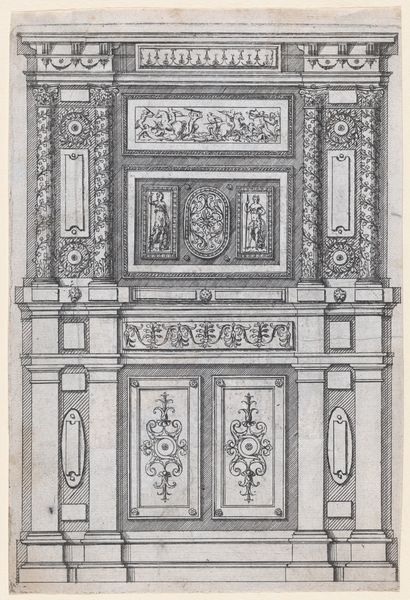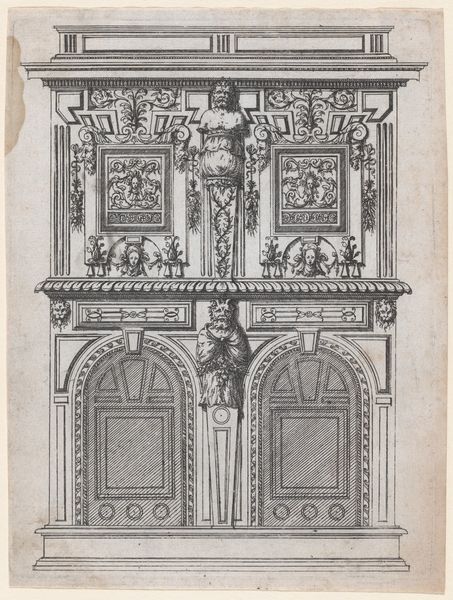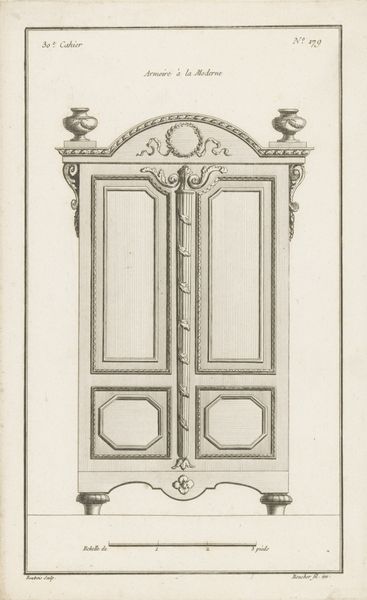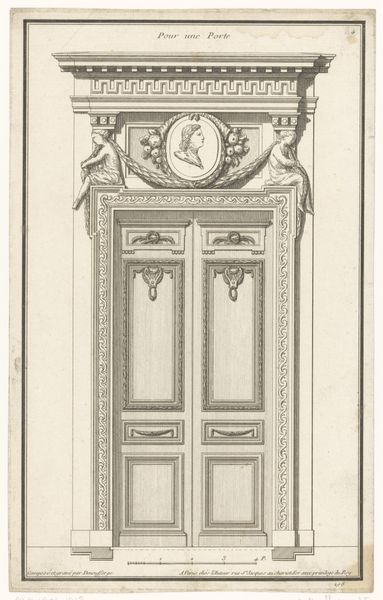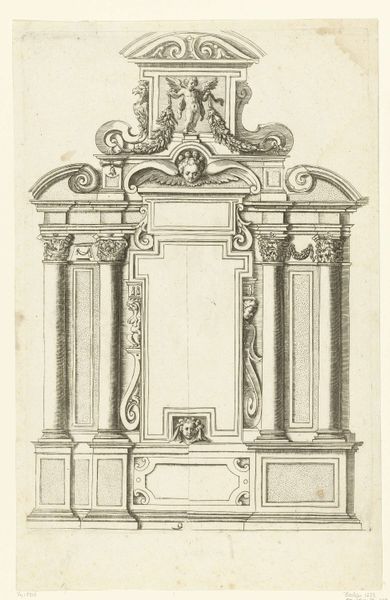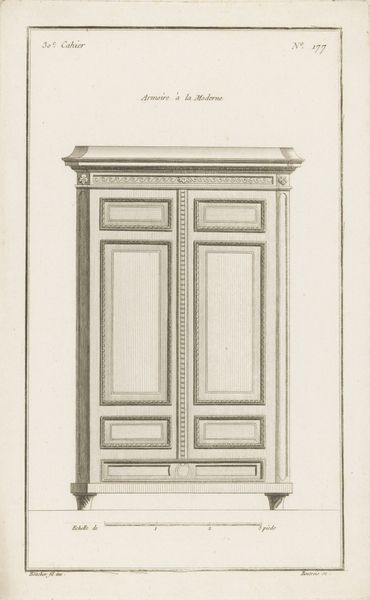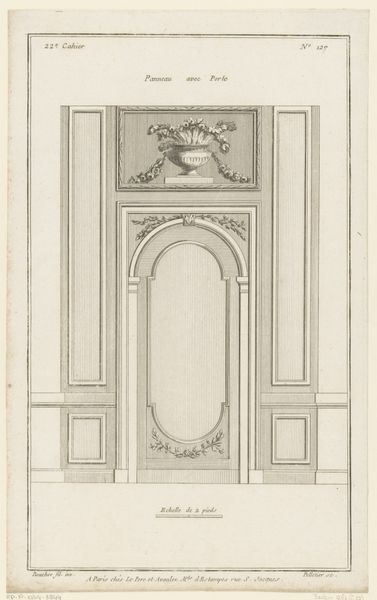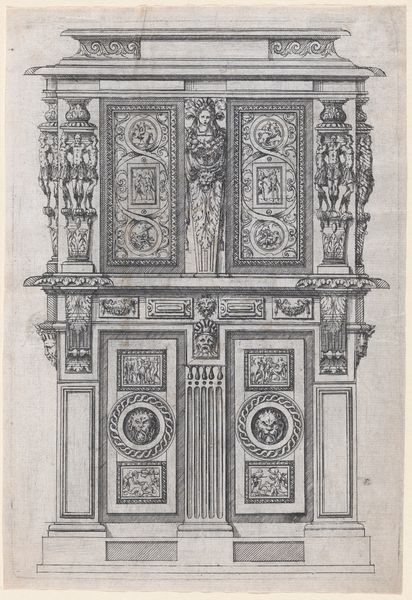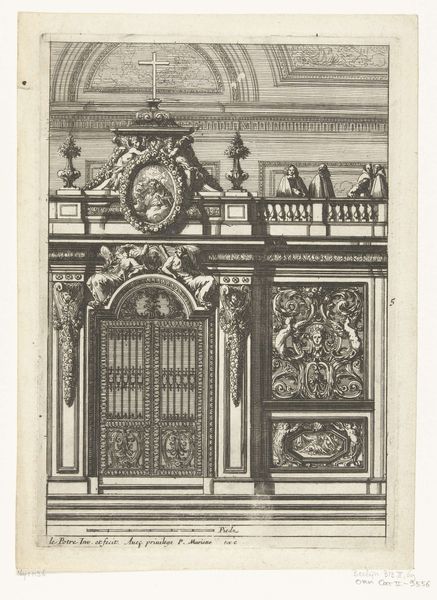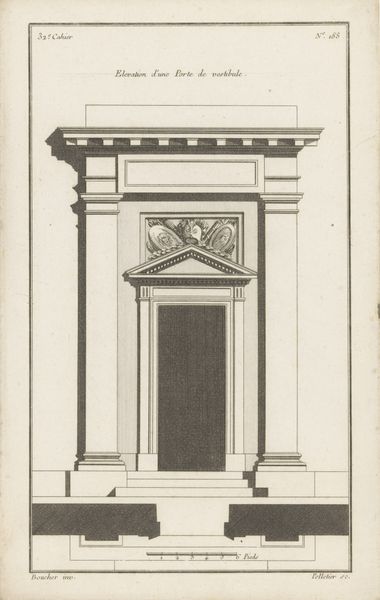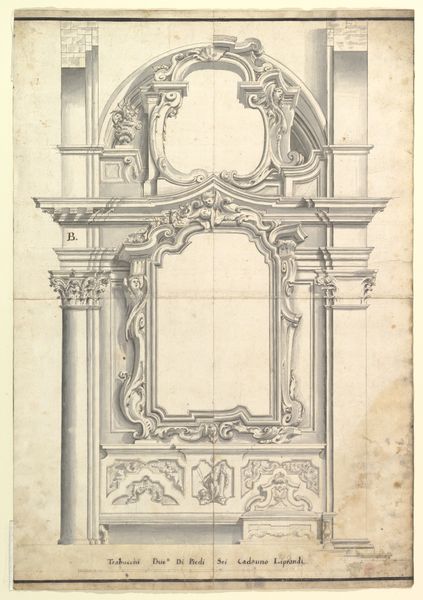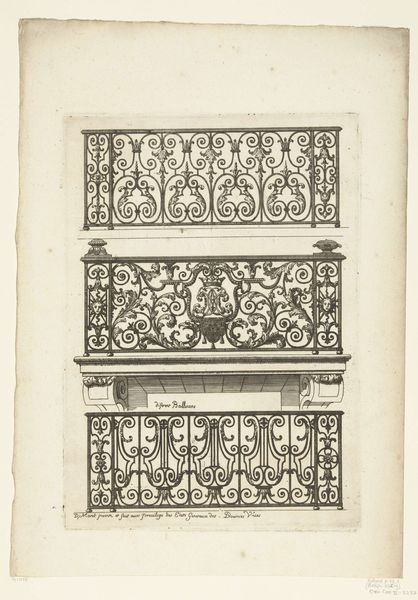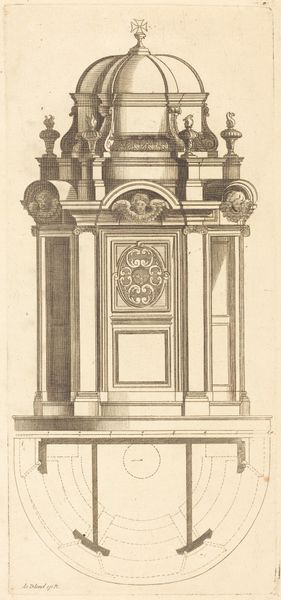
drawing, print, etching, engraving, architecture
#
drawing
# print
#
etching
#
form
#
11_renaissance
#
line
#
italian-renaissance
#
engraving
#
architecture
Dimensions: height 223 mm, width 142 mm
Copyright: Rijks Museum: Open Domain
Editor: This drawing, titled "Ontwerp voor een vierdeurskast," or "Design for a Four-Door Cabinet," was created by Giovanni Battista Montano sometime between 1580 and 1600. It is an etching, engraving, and print, currently held at the Rijksmuseum. The cabinet design is quite elaborate. What are some things that stand out to you about it? Curator: The opulence of the cabinet design is what strikes me first. The sheer level of detail – the cherubs, masks, and scrolling foliage – speaks to the values of display and wealth in the late Renaissance. Consider the intended audience: who was commissioning furniture like this and what did it communicate about their social standing? Editor: So, it was as much about showing off status as it was about functionality? Curator: Precisely! Think about the location of such a cabinet within a home, perhaps in a reception room, prominently visible to guests. The imagery – the putti and grotesque masks – derives from classical antiquity, showcasing the owner’s erudition and sophisticated taste. It's also worth noting that Montano himself was interested in reconstructing ancient Roman buildings, which links directly to his architectural and furniture designs. Editor: I see! And the "grotesque masks"... were they really meant to be frightening or off-putting? Curator: Not necessarily frightening, but certainly powerful and commanding. They are meant to evoke the grandeur and strength of ancient Rome. Their presence highlights a revivalist movement in art and architecture, reflecting a longing for a perceived “golden age.” How do you think contemporary audiences would interpret the inclusion of such classical symbols? Editor: I hadn't considered it that way. Now I can appreciate it more as part of a broader cultural movement. It’s interesting how a single design sketch can reveal so much about the priorities and tastes of the elite during the Italian Renaissance. Curator: Exactly! And it reminds us to consider the many layers of meaning embedded within art objects, especially regarding their social context and the values they represent.
Comments
No comments
Be the first to comment and join the conversation on the ultimate creative platform.
